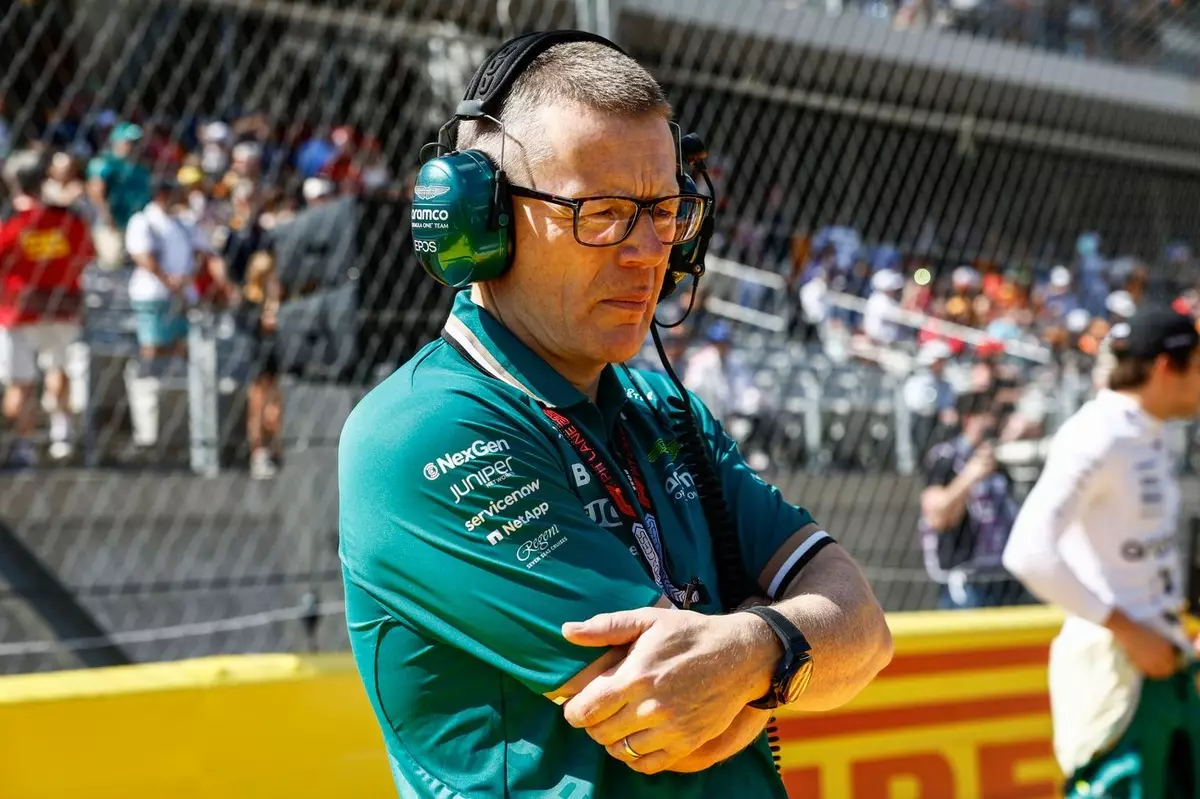In a striking move to enhance its competitive edge in Formula One, Aston Martin has undergone a significant reshuffling of its management structure. The announcement of Andy Cowell as the new team principal marks a pivotal era for the organization, indicating a shift towards a more streamlined and focused operational approach. This restructuring not only reflects the challenges and demands of the sport but also sets the stage for Aston Martin to pursue ambitious goals for the forthcoming seasons.
The departure of Mike Krack, who has been at the helm for nearly three years, signals a critical juncture for the team. Replacing him with Cowell, a veteran in the motorsport domain and former head of Mercedes High Performance Powertrains, suggests that Aston Martin is now placing emphasis on operational expertise. Cowell’s dual role as both the team principal and group chief operating officer suggests an intention to unify leadership under a single vision, enhancing communication and efficiency across departments.
Aston Martin’s team release highlights a deliberate shift in structure, separating the Aerodynamics, Engineering, and Performance departments into specialized units. This adaptation signifies an understanding that in the high-stakes environment of Formula One, focused teams can drive innovative solutions and improve overall race car performance. Industry professionals recognize that greater specialization often yields better results, and this evolution aligns with contemporary best practices in motorsport.
With Enrico Cardile stepping in as chief technical officer, having transitioned from a successful tenure at Ferrari, Aston Martin is now poised to deepen its technical prowess. His expertise will be crucial for developing the next generation of race cars, an essential component of any team’s strategy for becoming competitive. The establishment of the AMR Technology Campus aims to create a dedicated environment for technological advancement, where teams can work without distraction toward solving the complex challenges of racing.
Interestingly, Jason Newey’s appointment as “managing technical partner” introduces a flexible approach to technical leadership. His willingness to engage on his own terms could bring fresh insights, although it raises questions about consistent oversight and strategic execution within the engineering processes. Successful teams often thrive on robust interaction and collaboration, and thus, the balance of influence between Newey and the more structured roles of Cowell and Cardile will be pivotal.
The role of Tom McCullough as the performance director introduces a layer of complexity within the leadership ecosystem. While McCullough’s extensive experience with the team ensures a wealth of institutional knowledge, his future responsibilities remain somewhat ambiguous. With a background steeped in maximising on-track performance, the advent of Cowell’s leadership could redefine how McCullough’s skills are employed, particularly as Aston Martin eyes a path to becoming a championship contender.
As the team braces for the 2026 transition to a full works outfit in collaboration with partners like Honda and Aramco, maintaining momentum while navigating these leadership changes will be essential. Cowell’s acknowledgment of his team’s hard work indicates an appreciation for their foundational efforts as the team strives for higher achievement on the track. However, to foster genuine improvement, it’s vital that leadership align around a shared vision while empowering its personnel across all ranks.
For Aston Martin, the forthcoming season is not just a chance to solidify its operational frameworks but also an opportunity to reestablish itself as a formidable presence in Formula One. Cowell’s well-articulated ambition to push the team towards championship glory is commendable, yet it underscores the necessity for cohesive teamwork. As engineering, strategy, and driver performance converge, the new management team must foster an environment that supports innovation and rapid adaptation.
Aston Martin’s recent organizational changes present a pronounced commitment to future success. As the motorsport community keenly observes the effectiveness of this new structure, all eyes will remain on how the team responds to the evolving challenges of Formula One. This tangible shift in leadership and operational model could ultimately determine whether Aston Martin achieves its aspirations or remains a mid-field competitor. The upcoming seasons will be defining moments for the team, testing its resilience and ambition against the relentless pursuit of excellence in an unforgiving arena.


Leave a Reply